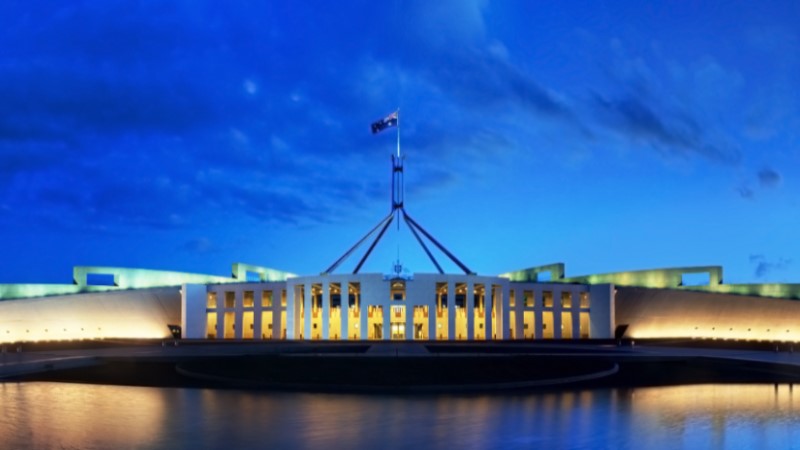Influence creep? Australia well-equipped to hold its own
October 01 2017

By Elena Collinson and James Laurenceson
Note: This article appeared in the 2017 special edition of the Vision Times, ‘The Giant Awakens: A collection of insights into Chinese government influence in Australia’, on October 1 2017.
Burgeoning trade, investment and people-to-people links have stirred debate about whether Australia has become vulnerable to Chinese government influence.
The Australian Trade Commission notes that the last time Australia had a bilateral trade relationship as significant as its one with China now was back in 1952-53 with the UK. Australia is second only to the US as a host country for large-scale Chinese overseas direct investment. And Mandarin is now the second most commonly spoken language in Australia behind English.
Yet in contemplating Chinese influence, Evelyn Goh, Professor of Strategic Studies at the Australian National University (ANU) makes a crucial distinction: there is a difference between power as resources and power as influence. As the world’s second largest economy, and with the world’s largest population, China plainly has resources. But power only becomes influence when there is evidence that a target country has changed its stance or policy to be more in line with Beijing’s preferences.
Despite apparently having both the means and motives, a 2013 study of the effectiveness of China’s economic statecraft by University of Sydney international relations expert James Reilly highlighted that Australia had not proven vulnerable to Chinese coercion. He returned to this conclusion this year in a talk to the Australia-China Relations Institute, stating, ‘Beijing hopes to foster a domestic political climate in Australia that is supportive of Chinese investment and trade, something that China actually has had a great deal of difficulty in doing in recent months. China is, I think, very unlikely to try to even leverage its economic influence in Australia through coercion and is even less likely to succeed.’
A survey of recent developments suggests this conclusion – that Australia has continued to be resistant to Chinese influence – rings true. Certainly, deepening links with China have not stopped the Australian government from vigorously supporting the US alliance or from criticising the Chinese government.
On the eve of his departure to deliver a keynote address at the Shangri-La Dialogue in Singapore in June, Prime Minister Malcolm Turnbull declared that the Australia-US alliance was ‘more important than ever.’ This was despite murmurings from some prominent Australian voices about divergences in Australian interests and values with the current US administration. And in a leaked transcript of Prime Minister Turnbull’s January 28 phone call with US President Donald Trump, the Prime Minister signed off with, ‘You can count on me. I will be there again and again.’ More recently, the Prime Minister said of the alliance in an August 11 interview, ‘In terms of defence, we are joined at the hip.’ He reiterated this in another interview on September 6, stating, ‘Our alliance is absolutely rock solid. We confirmed and affirmed our alliance. We have America’s back. America has our back. We are joined at the hip.’
Earlier this year in two major speeches to international forums Australian Foreign Minister Julie Bishop enunciated support for a position where China’s rise is balanced by an expanded US role in the Indo-Pacific region. She even delivered the blunt message that unless China embraced democratic institutions and habits it could not be counted upon to resolve disagreements in accordance with international law, nor could it hope to reach its economic potential.
It is true that Australia has permitted substantial Chinese investment in critical infrastructure such as electricity networks and ports. Critics have argued that the security vetting of these investments has not been sufficiently rigorous or discerning, thus potentially undermining Australian decision-making sovereignty.
The 2015 sale of the lease to operate Port of Darwin to a Chinese private company is used as their banner case. Yet a review into the Port of Darwin sale saw leaders of Australian security agencies rejecting wholesale the notion that there was any possibility national security could be compromised. In reference to claims that operating the port could facilitate spying by the Chinese state, then-Defence Secretary Dennis Richardson said, ‘These issues, when you examine them, melt like butter sitting on a car bonnet on a hot day.’
In 2016, the Australian Treasurer blocked the $10 billion sale of a 50.4 percent stake in Australia’s largest energy network, Ausgrid to two Chinese bidders, citing national security concerns. It was reported that this decision was based on the unequivocal advice of all Australia’s national security agencies. The Treasurer also blocked the sale of cattle empire S Kidman and Co to a Chinese buyer on two occasions, simply stating that he did not consider the sale in Australia’s national interest. The sale was only approved after the bid was restructured and Chinese interests were whittled down to a one-third minority stake.
In short, when the situation warrants it, Australia seems to have no qualms in rejecting Chinese investment. But it also has sufficient confidence in its regulatory processes to welcome investment when it serves the national interest.
Australia has also proven that it can act when it deems its regulatory processes require strengthening. For example, the Australian government this year established a Critical Infrastructure Centre within the Attorney-General’s Department to undertake assessments of federal, state and privately-owned critical infrastructure and advise the Foreign Investment Review Board of national security risks such as potential for sabotage, espionage and coercion. The Australian government has also initiated a review of Australia’s espionage and foreign interference laws, with a view to introducing reforms before the year’s end.
There is more evidence to support the assertion that Beijing has been successful in influencing other areas of Australian society, such as local Chinese-language media. Wanning Sun, Professor of Media and Communication Studies at the University of Technology Sydney, observes that, ‘China has made it clear that Chinese migrant media are the vehicle with which they seek to engage in a two-phase process of communication: first, the state Chinese media set out to influence diasporic Chinese media; second, the diasporic media are expected to influence the mainstream host media.’ And she adds that in Australia’s Chinese-language media, ‘there has been a clear shift from media representations of China that are mostly critical to representations that are sympathetic or even supportive.’
But Professor Sun also concludes that ‘there is little clear evidence that such ‘localised’ propaganda has a direct impact on Chinese-speaking audiences, let alone the broader Australian community.’ This is because Chinese audiences harbour an innate scepticism towards state propaganda and those that are better educated access news and current affairs from a variety of sources.
This year there have been increasing reports of Chinese government attempts to influence Australian university lecture and tutorial content through fermenting protests by Chinese international students. Objections to a Sydney University lecturer’s use of a map showing Chinese-claimed territory as part of India resulted in an apology by the academic. So too did complaints against an ANU lecturer who translated a warning about cheating into Chinese language. Meanwhile, a Monash University lecturer was suspended following the inclusion of a question in a quiz that some students deemed made fun of Chinese officials.
Most recently, a Newcastle University lecturer was confronted by some Chinese students for listing Taiwan as a ‘country’ – a secret recording of which was provided to Chinese-language media. But in this case, Newcastle University responded by rebuking the course of action taken by its students and made no demands the lecturer apologise.
The point is obvious: when cases of nationalist agitation arise, Australian universities still possess the ready ability to preserve academic freedom.
At the same time, some of the language used in mainstream media in response to these incidents that involve a small fraction of the 160,000 Chinese students in Australia goes beyond the available evidence. There is no ‘war being waged by Chinese international students’. The Chinese student cohort does not embody ‘racial chauvinism’, which one commentator now claims Beijing is exporting to Australian shores.
To be sure, Chinese students can – and do – come under pressure from the Chinese embassy, consulates and their peers to toe the party line, seemingly more so now than in the past. This means there is a genuine need for Australian universities to better connect with Chinese students and support their freedom of expression. But this is only made more difficult by promoting a simplistic narrative which seems to demand that Chinese students either disavow their support of Chinese government positions or be dismissed and labelled as brainwashed by communist propaganda.
Australia needs to remain vigilant as its links with China grow. But the fact that instances of perceived Chinese government influence are so regularly identified and investigated, sometimes with only modest evidence found, is perhaps the most emphatic reason to be confident that Australia is in little danger of surrendering its decision-making sovereignty.
Elena Collinson is Senior Project and Research Officer at the Australia-China Relations Institute at the University of Technology Sydney.
Professor James Laurenceson is Deputy Director of the Australia-China Relations Institute at the University of Technology Sydney.


